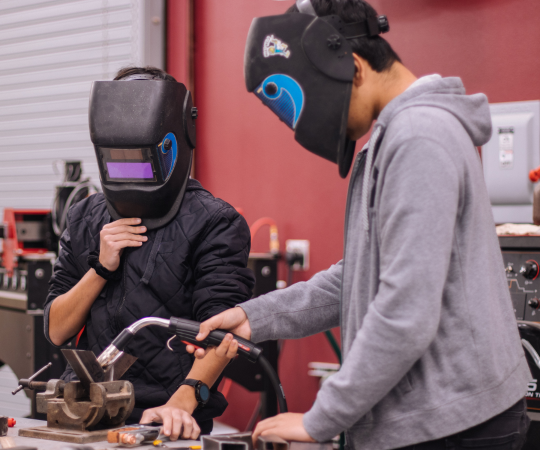Plasma Welding: The Future of Metal Joining Technology
Introduction
In the world of metal joining, technologies are evolving at a breakneck pace. Among these advancements, plasma welding stands out as a beacon of innovation and efficiency. It's not just another welding technique; it's a game-changer that is reshaping industries ranging from aerospace to automotive. As we delve into this article, we'll explore various facets of plasma welding, its advantages over traditional methods like MIG welding and TIG welding, and its role in modern metal fabrication services.
What is Plasma Welding?
Plasma welding is an arc welding process that uses a plasma torch to create high-temperature arcs between the electrode and the workpiece. This method provides precise control over heat input, which can be crucial for delicate and intricate welding tasks. Unlike conventional welding techniques, plasma welding offers greater versatility and efficiency.
How Does Plasma Welding Work?
The plasma arc is generated by ionizing a Xpress Mobile Welding Phoenix A1 Garage Doors Gold Coast gas—typically argon or a mixture of gases—through an electric arc. This ionization allows for concentrated heat to be directed onto the workpiece. The process involves several steps:

Why Choose Plasma Welding Over Other Methods?
While MIG welding, TIG welding, and arc welding have their own merits, plasma welding brings unique benefits to the table:
- Precision: The focused nature of the plasma arc allows for meticulous work on thin materials without overheating them.
- Speed: Plasma welding generally has faster travel speeds compared to other methods.
- Versatility: It can join various materials such as stainless steel, aluminum, titanium, and more.
Comparing Plasma Welding with Other Techniques
Plasma vs. MIG Welding
MIG (Metal Inert Gas) welding is popular due to its simplicity and speed but lacks the precision offered by plasma welding.
Key Differences:
- Heat Control: Plasma welding offers superior heat management.
- Material Thickness: MIG is better suited for thicker materials whereas plasma excels in thin sections.
Plasma vs. TIG Welding
TIG (Tungsten Inert Gas) welding offers excellent control but at a slower pace.
Key Differences:
- Speed: Plasma is generally faster than TIG.
- Ease of Use: MIG may be easier for beginners compared to both TIG and plasma techniques.
Plasma vs. Arc Welding
Arc welding encompasses various techniques but often produces more spatter compared to plasma.
Key Differences:
- Cleanliness: Plasma produces cleaner welds with less cleanup required afterward.
- Energy Efficiency: Plasma tends to consume less energy due to its focused heat application.
Applications of Plasma Welding in Various Industries
Aerospace Industry
In aerospace applications where precision is paramount, plasma welding shines due to its ability to produce strong yet lightweight joints without compromising integrity.
Automotive Manufacturing
Automakers utilize plasma welding for components requiring high strength-to-weight ratios while ensuring aesthetic quality in visible areas.
Medical Equipment Fabrication
With stringent hygiene standards, medical device manufacturers prefer plasma due to its clean welds that minimize contamination risks during production.
Electronics Industry
Plasma's precision makes it ideal for assembling delicate electronic components that require high levels of accuracy without damaging sensitive parts.
Welding Equipment Required for Plasma Welding
When embarking on a plasma welding journey, having the right equipment is vital. Here’s what you’ll typically need:
Key Considerations When Selecting Equipment
Choosing suitable equipment depends on factors like:
- Material type
- Joint configuration
- Desired penetration depth
Welding Safety Practices for Plasma Welding
Safety should always be a priority when engaging in any form of metal fabrication service—including plasma welding.
Protective Gear Necessary for Welders
Safety Protocols While Welding
It’s essential to follow established safety practices such as:
- Ensuring proper ventilation in your workspace
- Keeping flammable materials away from your working area
- Regularly inspecting equipment before use
Mobile Welding Services in Phoenix
For those seeking convenience coupled with expertise, mobile welding services have gained traction across cities like Phoenix.
Why Opt for Mobile Welding?
Services Offered by Mobile Welders
Mobile welders typically offer services including:
- Structural repairs
- Custom fabrication
- Maintenance work
Future Trends in Plasma Welding Technology
As industries evolve, so does technology surrounding them—plasma welding included!
Innovations on the Horizon
FAQ Section
What are the main advantages of using plasma over traditional MIG or TIG?
Plasma provides superior precision and speed while being versatile enough for various materials making it ideal for specialized applications where quality matters most.
Can I perform mobile plasma welding?
Yes! Many mobile welders are now equipped with portable plasma equipment allowing them to perform high-quality jobs on-site effectively.
Is training necessary before using plasma welders?
Absolutely! Proper training ensures safe operation while maximizing effectiveness in achieving high-quality welds without accidents or mistakes.
What safety gear do I need when performing plasma welding?
You’ll need protective helmets, gloves resistant to heat and flames, leather aprons plus respiratory protection if working indoors or around hazardous fumes!
Is there a significant price difference between different types of welder machines?
Yes! Prices vary based on features offered; however investing in quality equipment pays off long-term through enhanced performance & durability over cheaper options which might require frequent replacements!
Conclusion
As we stand on the cusp of technological advancements within metal joining techniques like never before—it’s clear that “Plasma Welding: The Future of Metal Joining Technology” holds immense promise across diverse applications spanning industries worldwide! Its ability not only enhances productivity but also ensures top-notch quality makes it an indispensable tool going forward—setting benchmarks previously unachievable through older methods such as MIG & TIG alone!
Whether you're looking at mobile solutions or considering integrating this innovative technique within your operations—the future certainly looks bright indeed!